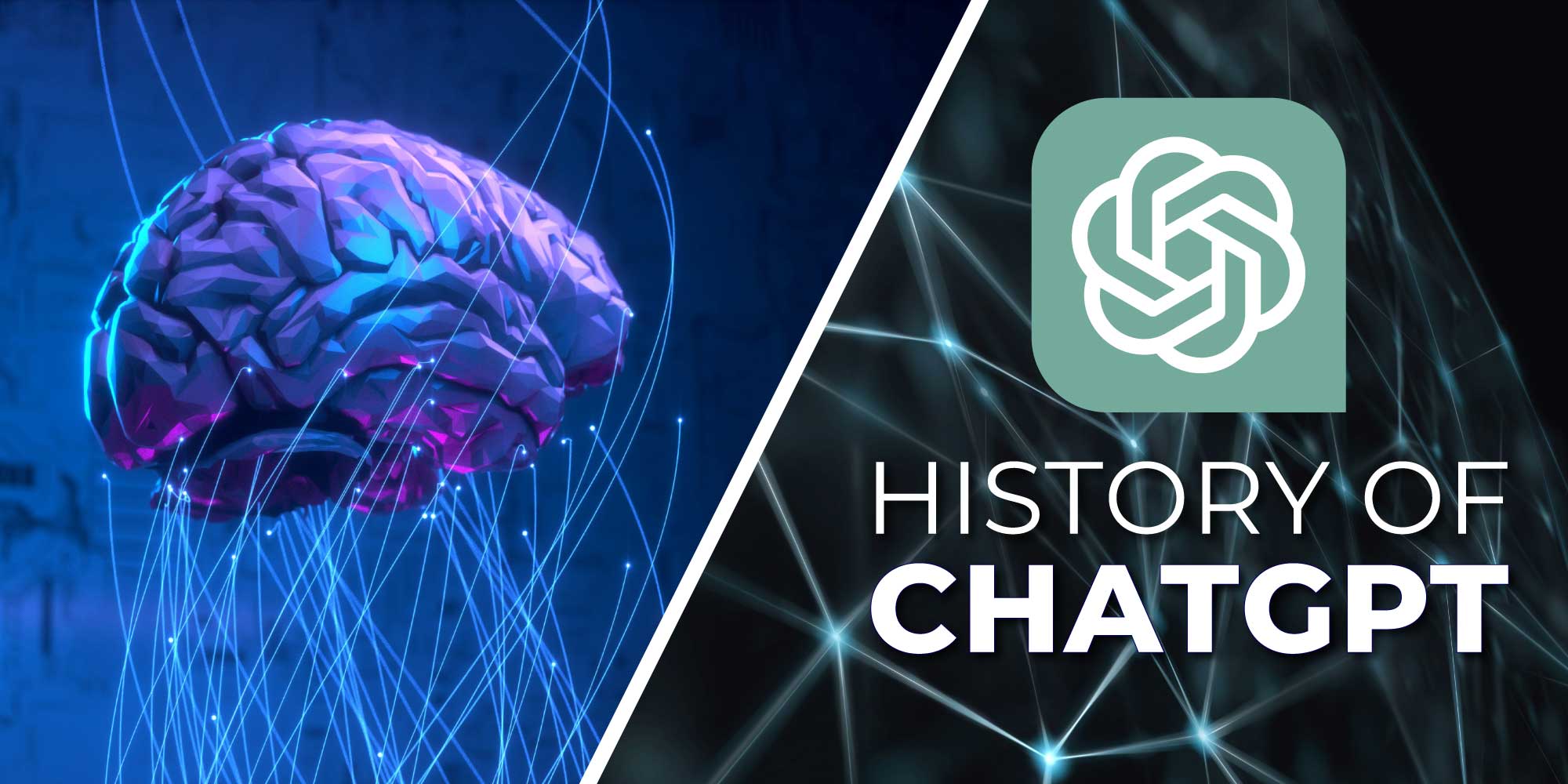Hello! Welcome to another “History of” post, in which we delve into the history of a piece of technology and educate you on where it came from and how it got to where it is now. We’ve written about several topics, including JavaScript, Cybersecurity, and Artificial Intelligence. There’s always something interesting to learn. Without further ado, we present the History of: ChatGPT.
ChatGPT is a cutting-edge AI chatbot created by OpenAI that uses machine learning techniques to generate human-like answers to text input. It has been in development for several years and has seen various upgrades and enhancements, making it one of the most advanced chatbots on the market today. In this blog, we’ll look at the history and features of ChatGPT, as well as what the future holds for this exciting technology.
How did it all start?
ChatGPT was launched on November 30, 2022. ChatGPT is an artificial intelligence program developed by OpenAI, a San Francisco-based AI research firm co-founded in 2015 by Elon Musk, Sam Altman, Greg Brockman, Ilya Sutskever, and Wojciech Zaremba. OpenAI originally started as a non-profit but changed its approach to creating a for-profit arm in 2019 to encourage more investments. Microsoft invested a substantial sum in OpenAI in January and added the chatbot’s underlying technology to its Bing search engine and other services. Microsoft also made a significant investment in OpenAI in 2019, which helped fund the development of ChatGPT. In March, OpenAI said it would no longer open-source the technical details of its systems to maintain its competitive advantage.
ChatGPT and its predecessors stretch back to the mid-1990s when Artificial Intelligence (AI) research began. Richard Wallace developed the first AI chatbot at MIT, which was driven by a natural language processing system and could converse fluently with humans. Soon after, IBM launched Watson, its own AI chatbot. Watson used a combination of AI algorithms and natural language processing to comprehend complex questions and answer human-like dialogues. This cleared the path for the development of natural language processing-based AI chatbots.
Microsoft’s Cortana and Google’s Allo both debuted in 2016, with AI-powered chatbot features. The following year, Facebook’s M and Apple’s Siri were released, as well as Chat Fuel, the first commercially accessible AI-based chatbot platform. Facebook M was discontinued in 2018. Their new AI, known as LLaMA, was launched recently, but it isn’t available to the public, rather as an open-source package anyone in the AI community can request access to.
ChatGPT’s development began in 2018 with the introduction of OpenAI’s Generative Pre-Trained Transformer (GPT) model. A hybrid chatbot platform called ChatGPT, which combines both GPT and natural language processing technologies, was created as a result of the GPT model’s ability to provide replies to inquiries and dialogues that were human-like.
OpenAI developed ChatGPT, a chatbot platform that combines AI-powered natural language processing and GPT technology to provide more accurate and human-like answers. It can also learn and interpret more complicated discussions, making it a valuable tool for firms wishing to automate customer support operations.
Features of ChatGPT
ChatGPT uses powerful machine learning algorithms to produce human-like answers to text input. This allows ChatGPT to hold natural, flowing conversations with humans, rather than providing pre-written responses.
ChatGPT is a robust NLP system that allows developers to easily construct conversational AI apps with a single line of code. It provides an intuitive and powerful conversational AI platform to create chatbot applications for customer support, sales, marketing, and more.
ChatGPT offers several features to help developers create powerful chatbot applications. It supports easy integration with popular messaging platforms such as Facebook Messenger, Slack, and Telegram and includes a structured dialogue system powered by a deep learning-based natural language understanding (NLU) engine. It also provides a keyword-based search engine, natural language generation (NLG) capability, and integration with other applications and services.
ChatGPT provides an analytics dashboard that allows developers to track the performance of their chatbot. This dashboard enables them to measure client interactions, evaluate consumer behavior, and improve the effectiveness of their chatbot. By leveraging these features, developers can quickly create and deploy sophisticated conversational AI applications that are optimized for customer support, sales, marketing, and more.
With the recent release of GPT-4, users are discovering whole new ways to use the technology. GPT-4 is a more advanced version of ChatGPT (which is GPT 3.5).
Future of ChatGPT
ChatGPT is a type of artificial intelligence (AI) that can be used to automate conversations and mundane tasks. It has the potential to revolutionize the customer service industry and automate tasks such as data entry, online ordering, and customer support. It is an exciting and innovative technology that is sure to have a bright future, making it an asset for businesses and individuals looking for an intelligent and engaging conversation partner.
To Conclude
ChatGPT is a groundbreaking artificial intelligence chatbot with the potential to transform customer service. It can automate discussions, save time, and give more tailored customer experiences, but it cannot think for itself and can only forecast what it has been taught. When implemented and used correctly, ChatGPT can be a valuable tool for firms looking to improve their customer support capabilities. As technology advances, it will be able to be employed in a broader range of applications and become more intelligent and human-like. ChatGPT is an intriguing and creative technology with a promising future.
If you’re curious how, exactly, ChatGPT works, here is a post that will break it down for you.
We hope you enjoyed reading this post. Stay tuned for other blog updates, and while you’re here, check out some of our other posts.

 Linkedin
Linkedin


